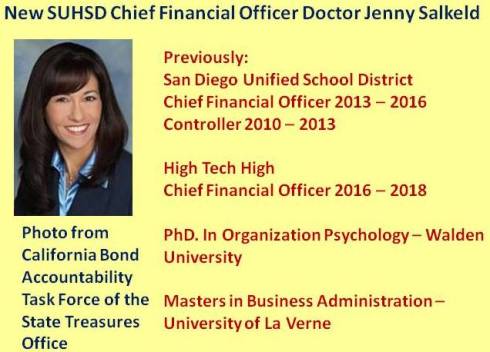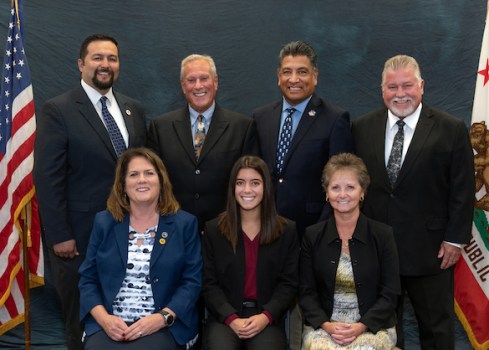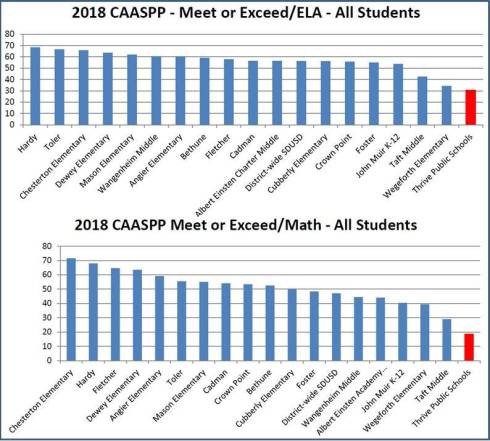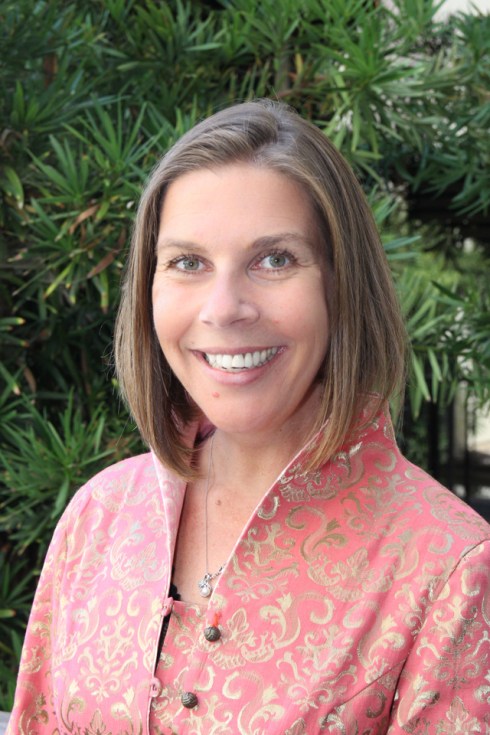By Thomas Ultican 5/29/2020
This month, a survey was launched in Oakland, California with the claim “This survey is a primary partnership between OUSD and GO Public Schools Oakland.” Apparently some Oakland Unified School District (OUSD) board members were stunned by the news and were not happy about raising the stature of a billionaire financed organization dedicated to privatizing public schools. It seems the survey resulted from a secret negotiation between OUSD administrators, GO and possibly some OUSD board members.
On May 13, when OUSD Director Shanti Gonzalez learned about the Survey, she wrote to Superintendent Kyla Johnson-Trammell,
“Hi Kyla. Can you tell me more about the robocall that went out today that referred parents to GO’s website/survey and why it was decided to send this to parents? We don’t typically use our infrastructure to refer people to groups that engage in political activities, so I am curious.”
Two days later Gonzalez wrote again,
“I understand the desire to collaborate and avoid duplication of efforts, but please remember that GO plays two roles in the Oakland education arena. In this case, their intent was to support our efforts to understand families’ needs. Their other role is to shape the composition of the board of OUSD and ACOE [Alameda County Office of Education], and to support the growth of charter schools, at least historically.”
OUSD Director Roseann Torres was characterized as being hopping mad when she found out about the survey. In an interview Torres stated,
“The Superintendent will not respond to my emails about the survey. She doesn’t care that as a Director, I am her boss.”
On the other hand Director Jody London’s response to constituent questions about the survey indicates that she was informed. She writes,
“The OUSD Office of Equity and family engagement team are collaborating with GO and a number of other Office of Equity partners to reach as many families as possible with the survey that will provide very important information about our planning the reopening of school. The survey is standalone and initially only directed participants to GO if they wanted to provide information to receive the mailed school supplies thank you gift. That has now changed …”
“This more collaborative approach with a number of partners on the family survey will give us the best opportunity for a strong level of participation and useful feedback about reopening.”

Logos of the OUSD Survey Partners
Originally the above logos were depicted at the top of every page of the survey and a gift offering at the end of the survey required the takers to give their email addresses to GO Public Schools. After Oakland Education Association President Keith Brown became involved, the direction to GO Public Schools was replaced and logos at the top of each page were eliminated. People were directed to the OUSD web site to apply for the gift and the only logos shown were from OUSD and GO on the bottom of the intro page.
This survey is transparently GO’s and there is another survey by OUSD which is somewhat similar. The committee that created the second survey includes Teach For America (TFA), KIPP charter schools and others. It appears the content of both surveys are important to the charter industry. The GO survey seems to bias towards technology implementation and the other survey appears to be priming a unified enrollment system.
Privatization in Oakland Driven by Billionaire Dollars
Chris Stewart is a 2014 Bush Fellow, the CEO of Brightbeam and sits on the board of Great Schools. He feels the claims of billionaire dollars are unfair. He sees them as working to create “quality schools” or does his high six figure billionaire paid salary cause that opinion? Without billionaire dollars and a state take-over, Oakland public schools would be much healthier and the community would not be so divided.
The billionaire spending to privatize public schools in Oakland has been enormous.
Tax records document that just two foundations, The Bill and Melinda Gates Foundation (EIN: 56-2618866) and the Walton Family Foundation (EIN: 13-3441466) have spent more than $240,000,000 on privatization efforts in Oakland.
The Silicon Valley Community fund was formed in 2006. It has become an extremely large donor directed fund with reported assets of about $8 billion dollars. In 2018, it took in almost $6 billion dollars. Only three years of their 1,500 page long tax reports (EIN: 20-5205488) are searchable but just those three years show more than $15,000,000 spent on privatizing schools in Oakland including a 2017 gift to GO of $1,000,000.
This year, The City Fund – which was founded by two billionaires in 2018 – reported spending $7,591,666 on privatizing Oakland public schools. The City Fund supports the implementation of the “portfolio model” of school administration to drive privatization.
The portfolio model directs closing schools that score in the bottom 5% on standardized testing and reopening them as charter schools or Innovation schools. Oakland’s school board implemented this model in 2018 under the name “Citywide Plan.” The method makes it almost certain that schools in poorer and minority communities will be privatized.
In 2004, Don Fisher of the GAP and Buzz Wooley a San Diego investor put up $100,000 each to establish the Charter School Growth Fund. In 2005, Buzz Wooley resigned from the presidency and Jim Walton took his seat on the board. Since then the Walton Family Foundation has had significant influence over the fund. Between 2012 and 2017 the Charter School Growth Fund (EIN 05-0620063) spent $12,998,570 supporting privatized schools in Oakland.
The Ely and Edythe Broad Foundation (EIN 95-4686318) has spent a relatively modest $3,457,664 on privatized schools in Oakland. However, four different graduates of Broad’s strange education leaders training academy have served as superintendents of OUSD between 2003 and 2018. Diane Ravitch recently noted that “Broad Institute got accredited even though it has no faculty, no campus, no course catalogue ….” It was accredited by the Western States Schools and Colleges. There have been two common outcomes wherever “Broadies” serve; labor and community unrest accompanied by extreme budget issues.
The latest budget problems in Oakland trace directly to the tenure of Antwan Wilson the last Broad trained superintendent to run Oakland’s schools.
Are Billionaire Bought Board Members Now a Board Majority?
Roseann “Rosie” Torres is a lawyer who moved from her hometown of Stockton to Oakland in 2004. A civic organization she joined gave her a homework assignment to study the public school district budget. This opened her eyes to the tremendous inequities between the schools in the hills where she lived and those in the flats where much of Oakland’s minority population lived.
In 2012, school board member Noel Gallo convinced Rosie to run for the seat he was vacating so he could run for city council. Before his tenure on the school board SFGate reports, “In the mid-1990s, Gallo was a city employee during then-Mayor Jerry Brown’s two terms in office, working as a staff member for former City Manager Robert Bobb.” That is the same Robert Bobb who would take the Broad training course in 2005 and become the Detroit public school’s first emergency manager in 2009. Gallo introduced Rosie to GO Public Education.
In 2012, GO provided Torres with $37,847 in independent expenditures and helped her raise $36,635 in direct campaign contributions. These were historically large numbers but that same year GO was providing even larger campaign assistance to James Harris and Jumoke Hinton-Hodge. All three candidates were successful.
In addition, GO representatives introduced Torres to many Democratic politicians serving locally, at the state capital and in congress. Torres said she really did not know who GO was and it took her about six months after the election to figure it out.
After Torres turned against the GO privatization agenda, there assistance unsurprisingly ended. In 2016 when she ran for reelection, her total campaign money fell from the 2012 $74,000 to $17,725, however a group of local activists went to work for her and she won.
Torres will not be running for reelection this year. She needs a break from the pressure and drama.
In 2012, billionaires started actively engaging in local school board elections. All at once, school board elections in cities like Dallas became well funded and prohibitively expensive. That same year billionaires including Stacy Schusterman of Tulsa, Oklahoma, Michael Bloomberg of New York City, Laurene Jobs Powell of Palo Alto, California and others started making max donations to certain Oakland school board candidates.
The direct contribution limits of $700 made the independent expenditures with unlimited spending the place where most of their money went. In Oakland, that independent expenditure money was funneled though the GO Public School Advocates committee.
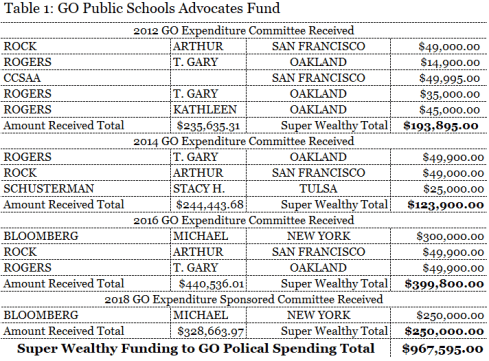
In 2018, $146,000 of Michael Bloomberg’s $250,000 contribution was put into the campaign to elect Gary Yee. Six years earlier, Yee was the focus of a recall campaign which was mainly about his push for closing schools. With Yee’s election, forces for privatization and school closing seem to have gained a solid majority on the OUSD board.
Some Closing Observations
The state government is also being corrupted by the prolific billionaire spending that is undermining democracy in America. In 2018, AB1840 which provided extra funding for financially strapped Oakland and Inglewood school districts was signed by Governor Brown. The root of their financial problems was the same; paying the extra unfunded costs associated with charter school openings and financial mismanagement by Broad trained superintendents.
One of the mandates for receiving financial help was the involvement of the Fiscal Crisis Management Assist Team (FCMAT) in stabilizing the budget. FCMAT was created and signed into law in 1991 by Governor Pete Wilson. The Kern County Superintendent of Schools office was selected as the administrative and fiscal agent for FCMAT. The purpose of FCMAT was to provide districts experiencing budget issues with professional leadership. However, this non-profit organization has developed a reputation for being more about helping political allies than struggling school districts.
FCMAT appears to have two strategies for solving district financial issues; laying-off personnel and closing schools.
On Memorial Day (May 25), the State Senate Fiscal Review Committee met to consider the May revise including AB1840 money for Oakland and Inglewood. Jane Nylund an Oakland resident and educator submitted a comment that reads in part,
“I strongly oppose the amendments of the Trailer Bill to AB 1840 regarding disbursements to Oakland Unified School District for 2020-21.”
“These amendments strip our local discretion to draw from the variety of strategies for fiscal solvency, listed as (c)(1)-(5). The language is clear: the District “MAY” use the strategies. It is not mandated to use any particular one of them.
“Given the current situation with Covid-19, and all the unknowns that come with it regarding schools, it is completely inappropriate that OUSD is held hostage to sell property that it may find necessary to keep open in order to mitigate health risks of Covid-19.”
Community based schools run under the authority of an elected school board have served as the foundation for American democracy for two centuries. Feckless billionaires operating from hubris or theological commitment or a desire to avoid taxes or a pursuit of more wealth are sundering those foundations.
Will activists of good will be able to throw off the yoke of billionaire financed tyranny and defend their public schools in Oakland?

